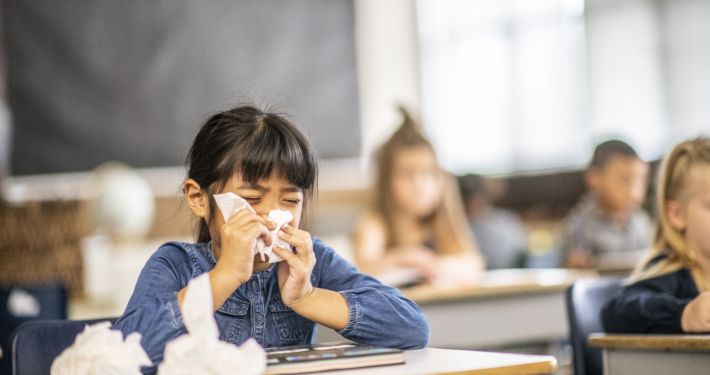Preventing the Spread of Respiratory Viruses in Schools During Cold and Flu Season
Effective Strategies for Protecting Students and Staff from Cold and RSV Season
By: Richard Rich
As the fall semester comes to a close and winter break approaches, schools are preparing for the arrival of cold and flu season. Rhinoviruses, influenza viruses, parainfluenza viruses, respiratory syncytial virus (RSV), enteroviruses, and coronaviruses are all potential causes of viral respiratory infections in children. While many of these viruses cause mild, cold-like illnesses that resolve on their own, some have the potential to cause severe illness and even death.
Schools are particularly susceptible to outbreaks of respiratory illness due to the high levels of person-to-person contact and the tendency for children to have less-than-perfect hand hygiene. Additionally, with more viruses circulating and lower immunity due to the lack of virus exposure over the past several years, many experts worry that people will be more vulnerable to getting sick this cold and flu season.
One way to help stop the spread of respiratory viruses in schools is by using R&R Lotion I.C. Hand Sanitizing Cream. This alcohol-free hand sanitizing cream is designed to kill 99.99% of germs on contact and is gentle on the skin, making it ideal for frequent use. It uses benzalkonium chloride as its active ingredient and also contains shea butter, sunflower butter, and various extracts and vitamins to nourish the skin and protect it from drying and cracking. By using R&R Lotion I.C. Hand Sanitizing Cream, schools can help reduce the spread of respiratory viruses and keep their students and staff healthy.
In addition to using hand sanitizer, there are other steps schools can take to help prevent the spread of respiratory viruses. The first is to encourage good hand hygiene. This means washing hands frequently with soap and water, especially after using the bathroom, before eating, and after sneezing or coughing. If soap and water are not available, hand sanitizer can be used as an alternative.
Another important step is to encourage respiratory etiquette. This means covering the mouth and nose with a tissue when sneezing or coughing, and disposing of used tissues immediately. If a tissue is not available, sneezing or coughing into the elbow can help prevent the spread of germs.
In addition to these individual measures, schools can also take steps to clean and disinfect common areas and surfaces. This includes frequently touched surfaces such as desks, doorknobs, and water fountains. Disinfecting these surfaces on a regular basis can help kill germs and prevent their spread. In conclusion, the cold and flu season is approaching, and schools are at high risk for outbreaks of respiratory illness. Using hand sanitizer like R&R Lotion I.C. Hand Sanitizing Cream, practicing good hand hygiene, encouraging respiratory etiquette, and cleaning and disinfecting common areas and surfaces can all help prevent the spread of respiratory viruses in schools and keep students and staff healthy. By taking these steps, schools can help reduce the impact of cold and flu season and maintain a safe and healthy learning environment.







